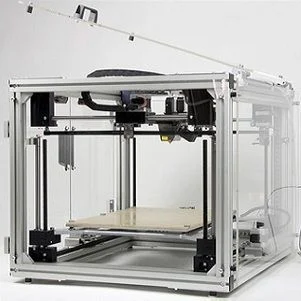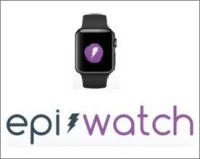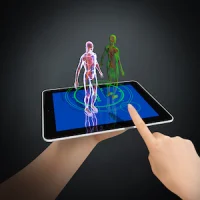The U.S. Food and Drug Administration has approved the first 3D-printed drug, SPRITAM®, for oral use as a prescription adjunctive therapy in the treatment of partial onset seizures, myoclonic seizures and primary generalised tonic-clonic seizures in adults and children with epilepsy.
The FDA approval is being hailed as a breakthrough in precision medicine. According to Aprecia Pharmaceuticals and Forbes, the FDA decision is a huge step forward in the development of personalised drug therapies, and one that could help providers treat a wide range of very specific health conditions.
Aprecia is manufacturing SPIRITAM with its proprietary ZipDose Technology platform, which uses three-dimensional printing (3DP) to create a porous formulation that rapidly disintegrates with a sip of liquid. By using the 3DP platform, Aprecia can produce individual doses of the drug to exact specifications and that dissolves quicker than a normal pill.
"By combining 3DP technology with a highly-prescribed epilepsy treatment, SPRITAM is designed to fill a need for patients who struggle with their current medication experience," said Don Wetherhold, Aprecia's CEO. The company plans to market the new drug early next year, and Wetherhold said this will be the first in a line of products designed to help people with central nervous system ailments.
Aprecia officials say that because epileptics often have trouble swallowing what are often large pills, or are dealing with a swallowing disorder, the ideal medication needs to be delivered in a small, highly concentrated (up to 1,000 mg) dose that dissolves quickly.
Aprecia officials also note that while many epileptics have swallowing issues, there is also a high incidence of missed doses or other medication management issues, hindering treatment for the disease. They cited one survey in which 71 percent of patients admitted forgetting, missing or skipping a dose of seizure medication, and almost half reported suffering a seizure because of that missed dose.
With SPRITAM, the officials note, there is no measuring required as each dose is individually packaged, making it easy to carry this treatment on the go.
The 3DP technology could help providers develop better medication management programmes for their patients, according to a Forbes article.
"3D printing of medications will allow doctors to know that the medicine they’re prescribing delivers the exact dose intended, as each pill will be completely uniform and tailored for the individual patient," says article author Robert J. Szczerba. "Such a capability opens the door to a number of fascinating distribution options as well, including the eventual possibility of printing personalised medicine in one’s own home."
Source: Aprecia Pharmaceuticals
Image credit: Creative Tools/Flickr
The FDA approval is being hailed as a breakthrough in precision medicine. According to Aprecia Pharmaceuticals and Forbes, the FDA decision is a huge step forward in the development of personalised drug therapies, and one that could help providers treat a wide range of very specific health conditions.
Aprecia is manufacturing SPIRITAM with its proprietary ZipDose Technology platform, which uses three-dimensional printing (3DP) to create a porous formulation that rapidly disintegrates with a sip of liquid. By using the 3DP platform, Aprecia can produce individual doses of the drug to exact specifications and that dissolves quicker than a normal pill.
"By combining 3DP technology with a highly-prescribed epilepsy treatment, SPRITAM is designed to fill a need for patients who struggle with their current medication experience," said Don Wetherhold, Aprecia's CEO. The company plans to market the new drug early next year, and Wetherhold said this will be the first in a line of products designed to help people with central nervous system ailments.
Aprecia officials say that because epileptics often have trouble swallowing what are often large pills, or are dealing with a swallowing disorder, the ideal medication needs to be delivered in a small, highly concentrated (up to 1,000 mg) dose that dissolves quickly.
Aprecia officials also note that while many epileptics have swallowing issues, there is also a high incidence of missed doses or other medication management issues, hindering treatment for the disease. They cited one survey in which 71 percent of patients admitted forgetting, missing or skipping a dose of seizure medication, and almost half reported suffering a seizure because of that missed dose.
With SPRITAM, the officials note, there is no measuring required as each dose is individually packaged, making it easy to carry this treatment on the go.
The 3DP technology could help providers develop better medication management programmes for their patients, according to a Forbes article.
"3D printing of medications will allow doctors to know that the medicine they’re prescribing delivers the exact dose intended, as each pill will be completely uniform and tailored for the individual patient," says article author Robert J. Szczerba. "Such a capability opens the door to a number of fascinating distribution options as well, including the eventual possibility of printing personalised medicine in one’s own home."
Source: Aprecia Pharmaceuticals
Image credit: Creative Tools/Flickr
Latest Articles
healthmanagement, 3D printing, FDA, Aprecia, epilepsy, personalised and precision medicine
The FDA has approved the first 3D-printed drug, SPRITAM® , for oral use as a prescription adjunctive therapy in the treatment of partial onset seizures, myoclonic seizures and primary generalised tonic-clonic seizures in adults and children with epilepsy.










